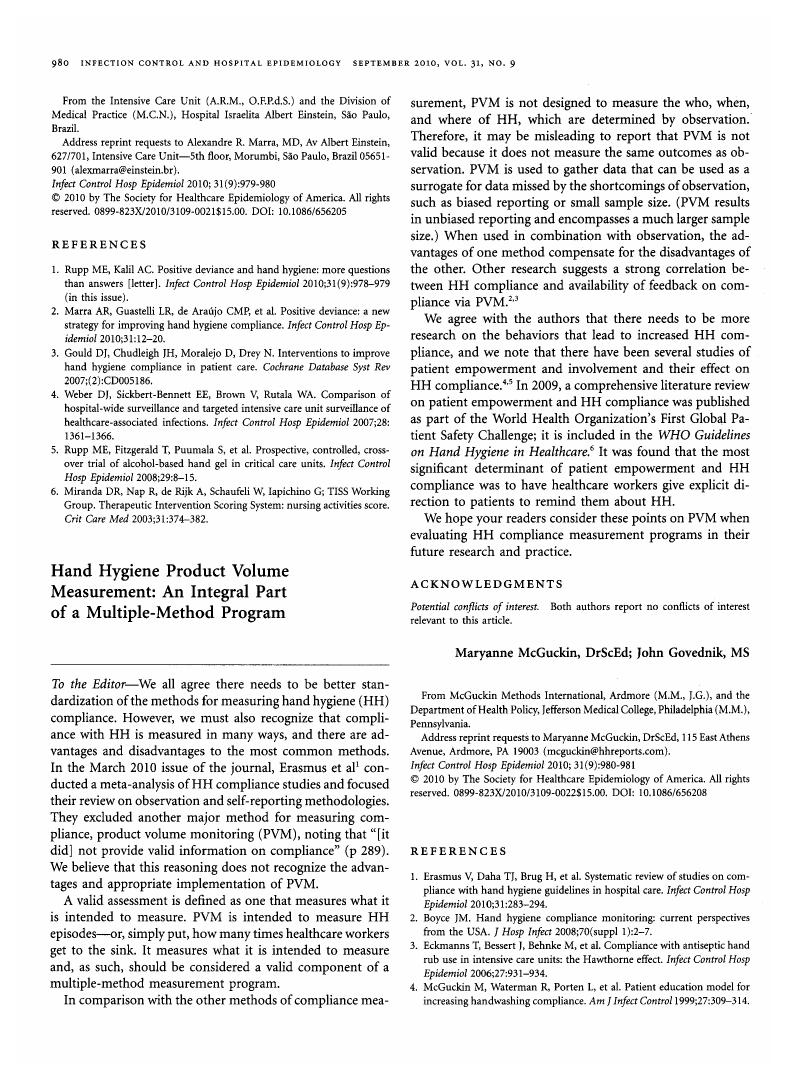Crossref Citations
This article has been cited by the following publications. This list is generated based on data provided by Crossref.
Erasmus, Vicki
van Beeck, Ed
and
Vos, Margreet
2010.
Reply to McGuckin and Govednik.
Infection Control & Hospital Epidemiology,
Vol. 31,
Issue. 9,
p.
981.
Ellingson, Katherine
Haas, Janet P.
Aiello, Allison E.
Kusek, Linda
Maragakis, Lisa L.
Olmsted, Russell N.
Perencevich, Eli
Polgreen, Philip M.
Schweizer, Marin L.
Trexler, Polly
VanAmringe, Margaret
and
Yokoe, Deborah S.
2014.
Strategies to Prevent Healthcare-Associated Infections through Hand Hygiene.
Infection Control & Hospital Epidemiology,
Vol. 35,
Issue. S2,
p.
S155.
Ellingson, Katherine
Haas, Janet P.
Aiello, Allison E.
Kusek, Linda
Maragakis, Lisa L.
Olmsted, Russell N.
Perencevich, Eli
Polgreen, Philip M.
Schweizer, Marin L.
Trexler, Polly
VanAmringe, Margaret
and
Yokoe, Deborah S.
2014.
Strategies to Prevent Healthcare-Associated Infections through Hand Hygiene.
Infection Control & Hospital Epidemiology,
Vol. 35,
Issue. 8,
p.
937.
Ellingson, Katherine
Haas, Janet P.
Aiello, Allison E.
Kusek, Linda
Maragakis, Lisa L.
Olmsted, Russell N.
Perencevich, Eli
Polgreen, Philip M.
Schweizer, Marin L.
Trexler, Polly
VanAmringe, Margaret
and
Yokoe, Deborah S.
2014.
Strategies to Prevent Healthcare-Associated Infections through Hand Hygiene.
Infection Control & Hospital Epidemiology,
Vol. 35,
Issue. 8,
p.
937.
Neo, Jun Rong Jeffrey
2017.
Construct validity—Current issues and recommendations for future hand hygiene research.
American Journal of Infection Control,
Vol. 45,
Issue. 5,
p.
521.



